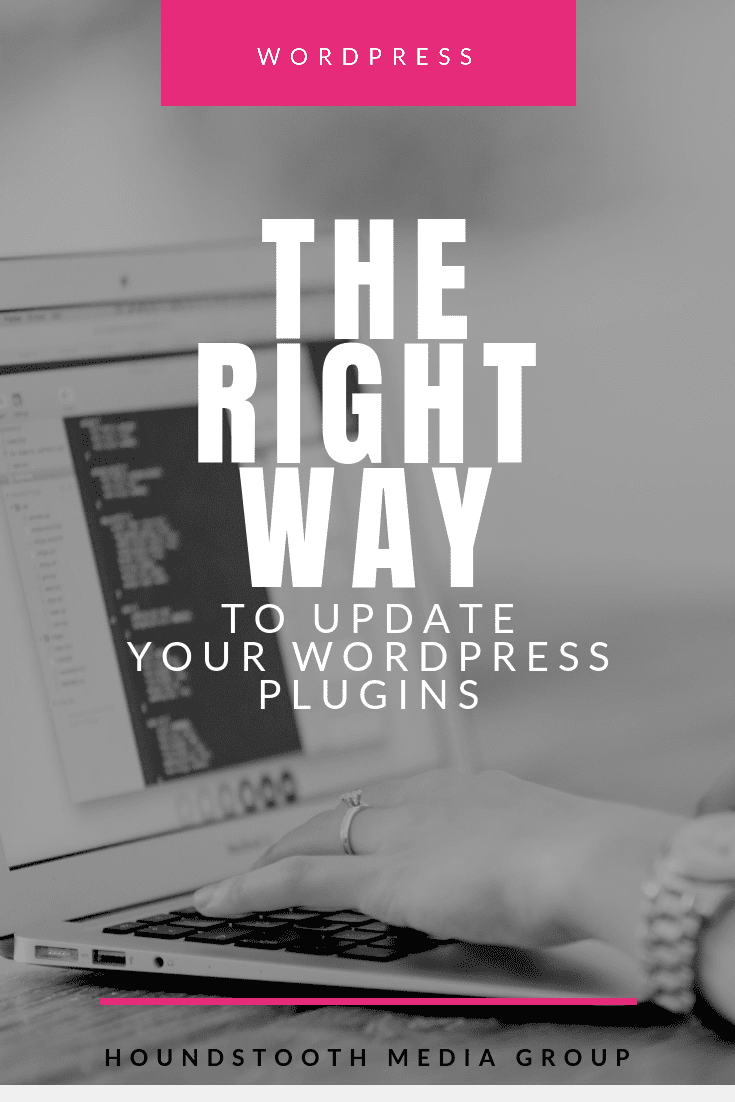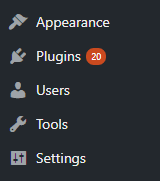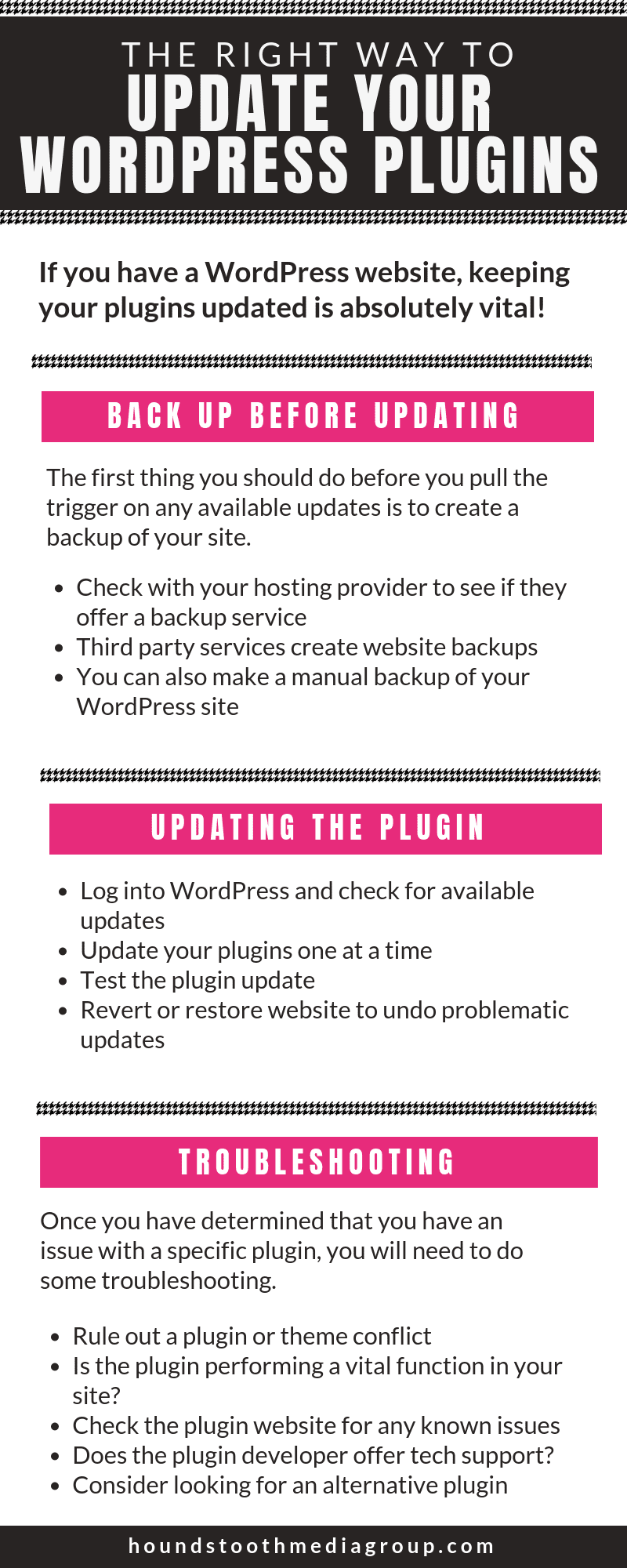
If you have a WordPress website, keeping your plugins updated is absolutely vital! When people come to us with broken or hacked websites, the culprit is quite often outdated software that is causing compatibility issues or leaving a gap in the security of the site. You should check your site for available updates on a regular basis in order to stay ahead of any potential issues. Here is the right way to do it!
Does it take a lot of time to update my WordPress plugins?
If you are staying up to date and checking on a regular schedule, it doesn’t take much time at all! We recommend that you check your site for updates once a week, and it typically takes 10 minutes or less to complete the work that needs to be done.
Before Updating WordPress Plugins
The first thing you should do before you pull the trigger on any available updates is creating a backup of your site. While it doesn’t normally happen, occasionally an update will cause a problem that breaks your site; creating a backup beforehand gives you an easy “undo button” in the event that an update leads to a catastrophe. There are several ways that you can make a backup of your site:
- Check with your hosting provider to see if they offer a backup service. It may already be included in your hosting plan!
- If your hosting plan doesn’t include backups, there are third-party services such as VaultPress and Snapshot by WPMUDEV that you can use to create website backups.
- You can also make a manual backup of your WordPress site, though this option is much more technically involved and time-consuming than an automated process.
We also recommend that you install the WP Rollback plugin, which makes it easy to revert plugin updates to a previous version in the case of minor issues where a full site restore is not required.
Completing Your WordPress Plugin Updates
There are a couple of different options available when it comes to updating your WordPress plugins. One of these options is a bulk updater that will update all of your plugins at once. Our advice? Don’t do it! In the event that one of your updates does cause problems on the site, doing a bulk update makes it much more difficult to pinpoint the source of the problem than if the updates are completed individually. Instead, we recommend the following process.
Log into WordPress and check for available updates
In your main WordPress menu on the left side of your dashboard, look for the Plugins option. If there is a little orange circle with a number there, then you have updates to complete! (Note that sometimes you may not see all updates until after you visit that section of the site, so click the “Plugins” option in the menu to get an accurate number.)

If you don’t see a notification indicating available updates, you are all set! Check back again in about a week to see if there are any new plugin updates to complete.
Update your plugins one at a time
Scroll through your list of installed plugins. Any that have updates available will be noted on this list.

If you see this notification, hit the “update now” link to install the new version of the plugin.
Now here is the important part: before you move on to the next update, test the one you just did!
Test the plugin update
After each individual update is complete, check the front end of your site. Does everything look to be in good working order? Pay special attention to the specific features that are powered by the plugin you just updated. For instance, if you updated a slider plugin, take a look at the slider and verify that it’s still displaying properly. If you updated your contact form plugin, it’s a good idea to send yourself a test email to make sure it’s performing as expected.
If everything looks good, move on to the next available update! Continue through the updates, testing in between each one, until they have all been completed.
Note: be sure to update all plugins, even those that are not currently active, in order to avoid potential security issues!
If you notice any problems, you should look at resolving those issues before doing any more updates!
Revert or restore website to undo problematic updates
Did the update make some of your site features not work properly? The easiest way to undo the update is by reverting it using the WP Rollback plugin mentioned above.
If you don’t have the option to revert the plugin update, or if the update crashed your site completely, restore the site using the backup that you created before starting your updates.
Troubleshooting WordPress Plugin Issues
Once you have determined that you have an issue with a specific plugin, you will need to do some troubleshooting. If possible, we recommend that you do the troubleshooting in a staging environment to avoid having the process impact any visitors to your live site. There are several things you will want to check in a specific order.
Rule out a plugin or theme conflict
One of the most common reasons a plugin will cause issues is a conflict with another plugin or with your theme. To determine if this is the case, try the following steps:
- Deactivate all plugins except the one that was causing the problem. Update the plugin and check to see if the issue still exists. If the problem has gone away, the issue is most likely a conflict with another one of your plugins. Is the problem still there? Then…
- Switch to one of the standard WordPress themes, such as Twenty Fifteen, Twenty Sixteen, etc. Test the updated plugin again. If that seems to have fixed the issue, then the problem is a conflict between the plugin and your theme.
- If you have determined it is a conflict with another plugin, you will want to find out which one is the culprit. To do this, reactivate your plugins one at a time, testing the site between each one. When the issue reappears, the most recently activated plugin is the one with a conflict!
Next steps for resolving WordPress plugin conflicts
Once you know for certain which items on your site are conflicting, you have a few different options for how to deal with it.
- Is the plugin performing a vital function in your site? If it’s something you can live without, simply removing it is the easiest solution.
- Check the plugin website for any known issues with the update. If you are having a problem with the plugin update, there is a good chance that others are experiencing the same thing. If the plugin website has discussion forums or a news/announcements section, it may be a good source for information about resolving the issue.
- Does the plugin developer offer tech support? If so, contact them and let them know the details of your problem. Hopefully, they can give you a hand! In some cases, they may not even be aware that the problem exists until someone brings it to their attention.
- Can’t get any assistance to resolve the issue? You may want to consider looking for an alternative plugin that performs the same function to replace the one that is causing your problems.
- One other possible solution, if you can’t get help through tech support, is to hire an independent developer to take care of things. We highly recommend Codeable as a source for this type of work.
Always Keep Your WordPress Plugins Updated!
Remember that WordPress plugin updates are an ongoing process and need to be addressed on a regular basis. Once you have completed all currently available updates and resolved any issues, be sure to keep checking back for additional updates. A little preventative maintenance is much easier, quicker, and cheaper than cleaning up issues with broken or hacked websites that can stem from neglected updates!
